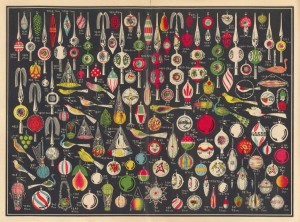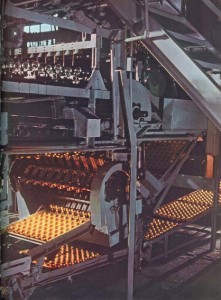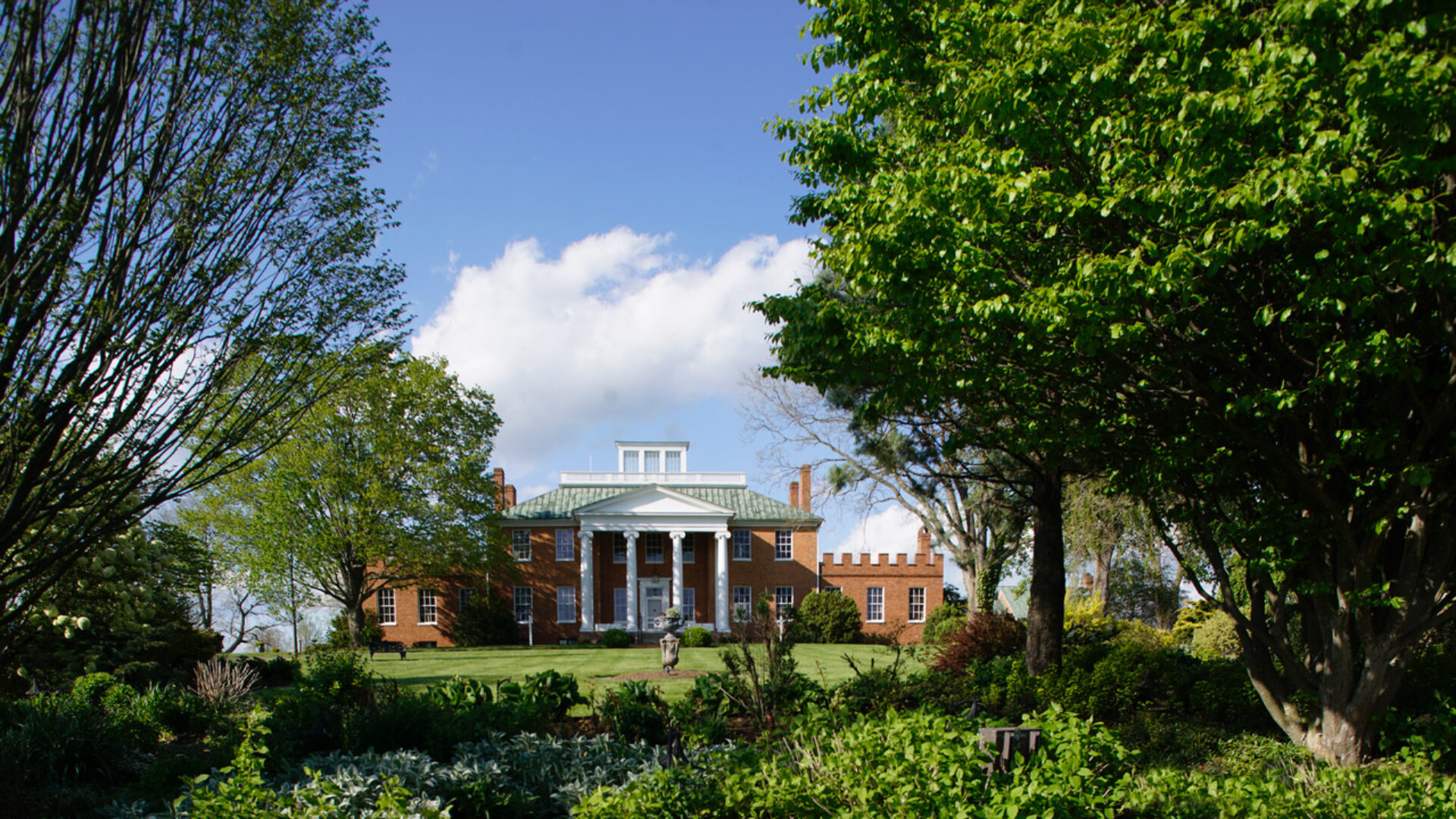Decorating trees at Christmas is a time-honored tradition for many families. During the Second World War, limited travel and rationing meant that many things that are today synonymous with the season, like big dinners, decorated cookies, and families gathered together, were not a feature of wartime Christmases. While everyone made due with less during the war, people still got in a festive mood by decorating their trees, often using natural items such as pinecones to decorate their homes and recycling old newspapers to create paper chains. Many magazines of the period carried Christmas themed images, such as Santa or a snowman, which could be cut out and attached to string to hang from a tree. In addition to these different ways of decorating, glass ornaments were still produced during the war and adorned many a tree.

The first man-made Christmas ornaments were produced in Germany in the 19th century by glassblowers who created pieces in imitation of the fruits that were commonly seen at Christmas. At first, these creations hung in windows but soon came to decorate trees. Glass ornaments were first sold in the US in the 1880s by Woolworth’s department store. Germany continued to dominate in making Christmas ornaments at the beginning of the 20th century, with other countries, such as Japan and Czechoslovakia, also manufacturing pieces. However, the beginning of the Second World War meant an end to ornament production in Germany. Additionally, negative feelings towards both Germany and Japan caused many Americans to destroy or get rid of their existing ornaments, which created a demand for new ornaments.

In 1940, Corning Glass Works modified their Ribbon Machine, originally used to make light bulbs, so that it could be used to create ornaments. Once modified, the machine was able to produce about 300,000 ornaments per day. Corning began mass producing ornaments at the request of Max Eckhardt, a German immigrant who had previously imported ornaments from his native country to sell in the US. Eckhardt’s company, Shiny Brite, decorated the glass balls made by Corning and sold them to department stores.
Shiny Brite’s ornaments were originally silvered on both the inside and outside, but war shortages left the materials needed to do this in short supply due to rationing. The company then began to paint stripes and other decorations on the exterior of their ornaments in pastel colors, as the materials required to do this were not in such short supply. War shortages also forced the company to stop using metal for ornament caps. Instead, caps were made from cardboard, with users often tying on yarn to hang the ornaments on trees.
Using these stories as inspiration, Long Branch will host a 1940s Historic Ornament Workshop where attendees will participate in creating their own WWII inspired pieces. The workshop will take place from1-4PM on Saturday, November 13th. Reservations are required as places and materials are limited. Please call or e-mail to find out more.
– Frances Monroe, Long Branch Plantation Intern
